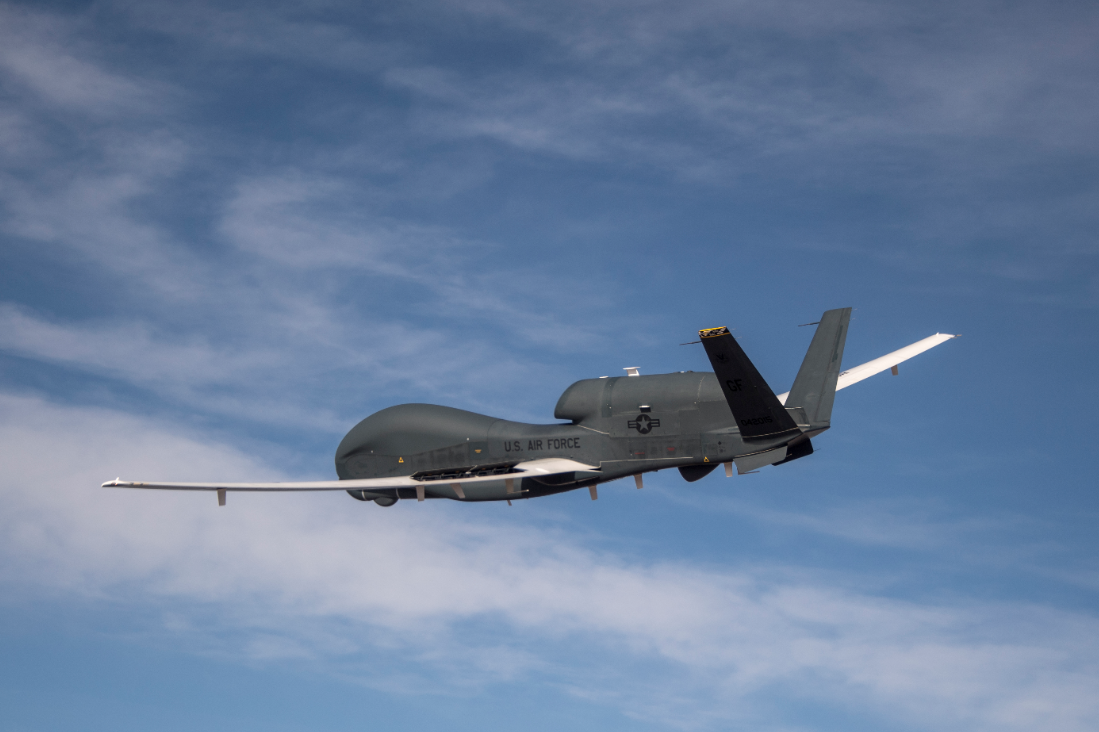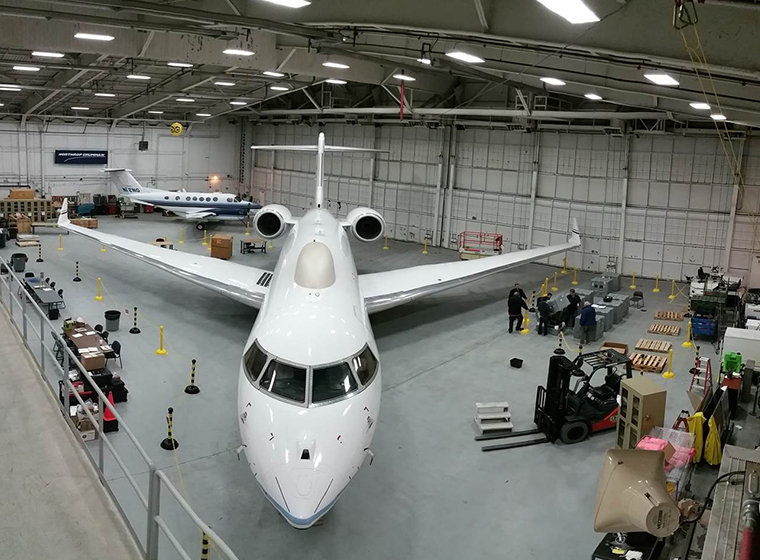
In January, Northrop Grumman received a $3.6 billion ID IQ contract for continued Battlefield Airborne Communications Node (BACN) operations, sustainment, and support.
After two decades of counterterrorism and counterinsurgency operations against insurgent groups and global extremist networks, a Great Power competition has once again emerged as the preeminent challenge facing global security. In this 21st century Great Power competition, the rapid advance and proliferation of technology is driving today’s threat.
To maintain our advantage, we must ensure forces can observe, orient, decide and act together, faster and with greater effect. That means investing in Joint All-Domain Command and Control (JADC2).
JADC2 is the combined concept and U.S. Department of Defense (DoD) vision through which the military services are driving to connect sensors, technologies, and decision makers with the right data at the right time across multiple or all domains. These technologies are essential to pull together disparate data from across the military services and share it on-demand with operational forces across all warfighting domains – just when it’s needed for mission success.
These goals are largely still considered aspirational. However, they remain arguably the most effective way for the military services and coalition partners to attain their top goal: to fight as one.
“We have a lot of data. We just don’t publish it; we don’t share it like we should,” said Air Force Chief of Staff Gen. Charles Brown at an industry conference on JADC2 in October. “We must accelerate the change required now to connect all our platforms and sensors and our weapon systems. We must develop the infrastructure, the digital backbone for the data. We have to get the IP right, and we have to get the policy right, so we can move the data we have.”
The work is already advancing through programs like the Air Force’s Advanced Battle Management System (ABMS) and the Army’s Integrated Air and Missile Defense Battle Command System (IBCS).
In mid-January, the Northrop Grumman-developed IBCS received Defense Department Milestone C approval to proceed with low rate initial production (LRIP). “The decision by our senior leaders to transition IBCS from development into initial production reflects their confidence in the maturity of the system and its readiness for operational testing to inform Initial Operational Capability,” said Maj. Gen. Rob Rasch, Army Program Executive Officer, Missiles and Space.
The expectation is that these multi-domain initiatives will ultimately become intertwined in a concept of operations across all military services, and eventually with coalition partners.
A first step in that direction came this past Fall when the Army and Air Force signed a two-year collaboration agreement in the development of Combined Joint All-Domain Command and Control, or CJADC2. It will be employed in joint all-domain exercises like those conducted by Army Futures Command within its Project Convergence networking integration initiative, which recently linked intelligence satellites and Marine Corps F-35 fighters to Army artillery.
Said Preston Dunlap, chief architect of the Air and Space Forces: “Imagine the level of situational awareness typically relegated to traditional brick-and-mortar centers being provided to those who need it most on the edge. Imagine allowing operators to choose what data feeds are important to them and for others to be able to subscribe to get the information they need. The power of this architecture is unlocked by services, allies and partners working together to connect networks and share information at machine speed. That’s all-domain superiority.”
Lowering Risk for JADC2
“We are working to connect the joint force as one by being truly innovative and responsive to this emerging and dynamic environment by bringing forward and leveraging both internal and commercial capabilities to make our legacy platforms better,” said Richard Sullivan, vice president, Future Combat UAS, Northrop Grumman. “The goal is to provide the minimum viable products of JADC2, and walk up to the desired outcome as quickly as possible with as low a risk as possible, while leveraging modeling and simulation, operations analysis, and understanding the steps that you can take with what’s already out there.”
It’s a bird-in-hand concept that DoD is embracing to reduce the risk of long technological development cycles. The goal is an operational system that can be improved by integrating more data from space, air, land, sea and cyber assets while securely moving and enabling access to mission data at unprecedented speeds.
An example of that philosophy would be taking a radar that is already flying at 50,000 feet and giving it the ability to pass data across domains to anyone that needs it. That’s what Northrop Grumman is doing with IBCS and its Battlefield Airborne Communications Node (BACN) gateway system.

Northrop Grumman’s Battlefield Airborne Communications Node (BACN) gateway system recently reached 200,000 combat operational flight hours since its first deployment with the U.S. Air Force in 2008. Image credit: Northrop Grumman 2017.
BACN already provides an open and integrated communication network to permit warfighters and disparate platforms to talk across different domains, merge data links to create a larger situational awareness picture and enhance mission effectiveness.
In January, the Air Force awarded Northrop Grumman Corporation a $3.6 billion indefinite-delivery/indefinite-quantity (ID/IQ) contract for continued BACN operations, sustainment, and support. The BACN system flies on both the EQ-4B Global Hawk unmanned aerial vehicle and the E-11A, a variant of the Bombardier Global Express business jet.
BACN can be seen as one of the first battle-tested gateway systems that enables warfighters and platforms to effectively communicate and share secure data across all branches of the DoD. The system has been used for missions such as airdrop, convoy, humanitarian assistance, close air support, and theater air control systems operations.

Ben Davies, Vice President and General Manager, Northrop Grumman’s Networked Information Solutions Division.
“One of the major challenges that exists today is the need to interconnect and unify networks so that data can be transmitted securely and resiliently between all platforms and domains,” said Ben Davies, the vice president and general manager of Northrop Grumman’s newly created Networked Information Solutions division. “Significant work has been done to ensure our platforms and sensors have the ability to collect exquisite data. We must equally focus on making sure that we have the right, secure communications and networking capabilities in place to be able to take that information and quickly pass it to the right command-and-control networks, end users, and operating bases.”
A range of Northrop Grumman’s advanced communications and network capabilities already have the ability to help the DoD move towards connecting the joint force as one. This includes offerings such as its family of gateway systems, the Freedom Radio product line and data fusion and processing solutions that are already starting to move the needle.
“We are using digital engineering technologies to accelerate and scale how we develop and test communications and networking capabilities, ensuring they perform in environments with a high number of nodes as we connect across air, land, space, and maritime domains,” explained Davies. “Modeling, simulation and analysis allow us to evaluate the entire mission engineering thread, gaining an understanding of how these solutions will perform in the operational environments.”
Resilient, Secure, Open, Integrated
Northrop Grumman is enhancing its gateway systems with improved data rates and processing, as it introduces new automation, software, fusion technologies, and streamlined communications. These capabilities are being built upon open systems architectures that will enable software-defined radios, for example, provide the ability to move data from fifth-generation fighter aircraft to fourth generation and vice versa—and ultimately to sixth-generation platforms when the time comes. At the same time, the company is working to reduce size, weight and power for its gateway systems.
In this data-driven age, Northrop Grumman is developing leading-edge technologies that create unsurpassed levels of network integration which increasingly will enable Joint Forces to identify, assess, decide, and act as one.
























